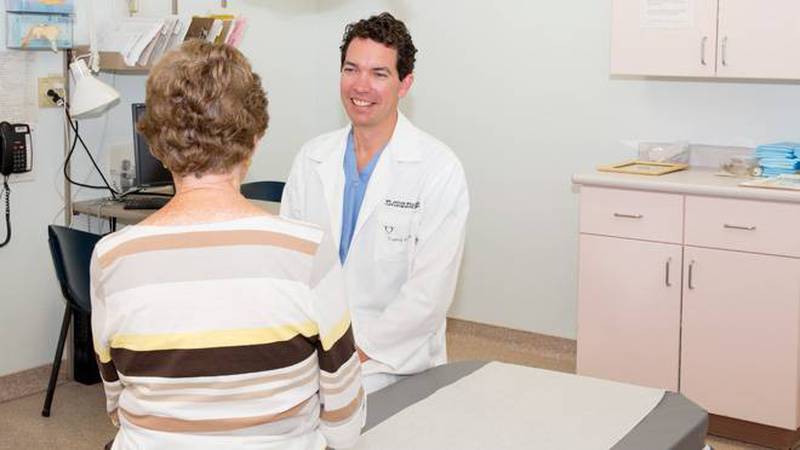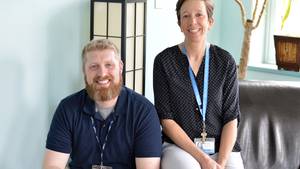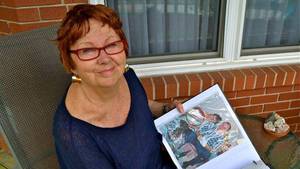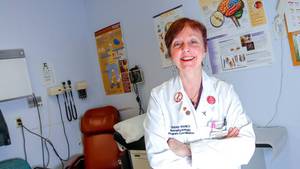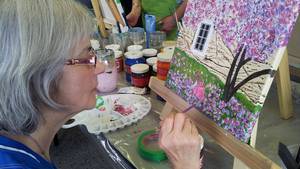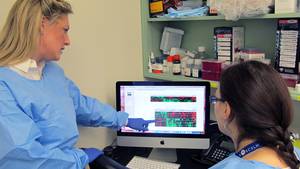For the Canadian women who undergo a mastectomy due to breast cancer, the scars serve as a constant reminder of a battle hard-won, but femininity and self-esteem are often the casualties. Facing the world cancer-free isn’t easy when an integral part of your identity has been left behind in the OR.
Breast reconstruction surgery is one way to help women regain their quality of life, whether it’s the freedom to wear a bathing suit or a certain neckline, or leaving behind the sweaty, cumbersome prosthesis.
“Do I miss the feeling of my natural breasts? Yes, that’s gone, but I feel whole,” says Deborah Hillier, 44, who as a mammographer at the QEII Health Sciences Centre, also screens women for the disease.
Deborah found the lump in her breast two years after her sister, Joanne, was diagnosed. Their mother is also a breast cancer survivor.
Deborah had a mastectomy in 2008 and almost a year-and-a-half later, had a delayed reconstruction, which allowed the time necessary for chemotherapy. With her treatment complete, Dr. Jason Williams, one of the three Plastic Surgeon breast reconstruction specialists at the QEII including Dr. Marty Leblanc and Dr. Steve Morris, reconstructed her right breast and removed her healthy left breast to insert a “spacer.” A spacer is gradually filled with saline over several months to stretch the tissues and create a “pocket” for the implant.
At the time of her reconstruction surgery on the right breast, a piece of her back muscle, the Latissimus Dorsi (LD), was “flipped” around to the chest wall to strengthen the tissue on the right side in a procedure known as an “LD Flap.”
In some cases, cutting the LD Flap may cause muscle weakness, so Deborah opted for it only on her right side. Three months later, the spacer was removed from the left breast and a permanent implant was put in.
As a mother of two, she says the seven-hour surgery was worth it to bid goodbye to the remaining ‘ticking time bomb’ in her chest. “I honestly didn’t want to lose that natural breast,” she says. “But I also never wanted to go through chemo again.” Now, when she encounters mastectomy patients at work who are curious about the procedure, she has been known to show them the results of her own.
“You can’t change how scared they are, but you can show them what (the results) look like,” she says. “I tell them, ‘look at me, I’m OK.’”
Dr. Williams performed 25 reconstructions last year. “We’re helping women rebuild their lives by rebuilding their bodies,” he says. “That is the essence of it.”
His priorities include improving access across the province, letting more women in remote areas know it’s an option, and discrediting the misconception that the procedure is cosmetic, when in fact, it’s covered by MSI as a surgical reconstruction.
“You didn’t ask to have your breasts removed,” he explains, “so you shouldn’t feel guilty about having them put back together.”
When Emmie Luther-Hiltz, married 32 years, a mother and grandmother, had an aggressive tumor removed from her right breast 20 years ago, all plans for a reconstruction were on hold indefinitely, as recurrence was a concern. Fifteen years later, however, Emmie returned to the operating room to have both breasts reconstructed. She had elected for a prophylactic mastectomy on her left side.
“I was so pleasantly surprised by how good I felt (with the results),” she says. “There was no downside.”
Emmie had a DIEP flap reconstruction (Deep Inferior Epigastric Perforator), one of two common tissue techniques using skin and fat taken from the lower belly along with the attached blood vessels. The elliptical parcel of abdominal tissue was then sculpted into a new breast mound, leaving a ‘tummy-tuck’ effect in the abdomen.
The TRAM flap technique (Transverse Rectus Abdominus Myocutaneous) uses fat, skin and muscle from the lower abdomen. Both the DIEP and TRAM techniques require microsurgery to reattach the blood vessels in the transplanted tissue to those in the chest wall. They also require longer operations and have an extended recovery time compared to saline implants.
Emmie wasn’t daunted by the length of the procedure – 13 hours, as it turned out – or the 10 to 12 weeks needed to recuperate.
“I went into it with a positive attitude – the surgeon told me it would be a tough recovery, so I was prepared for that mentally,” she says.
Emmie explains one of the best things about having had reconstruction surgery – aside from throwing away her prosthesis – is being able to buy a pretty bra or a bathing suit.
“I never would have waited that long had I known what a difference it made,” she says, “It was one of the best things I ever did.”

